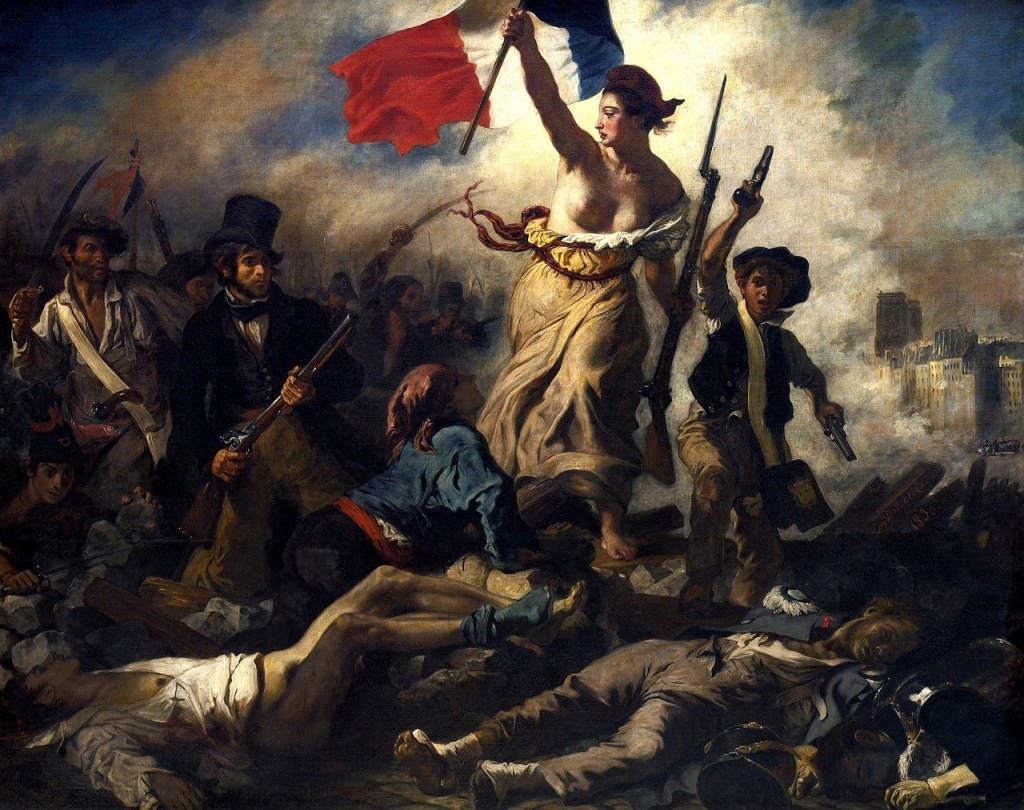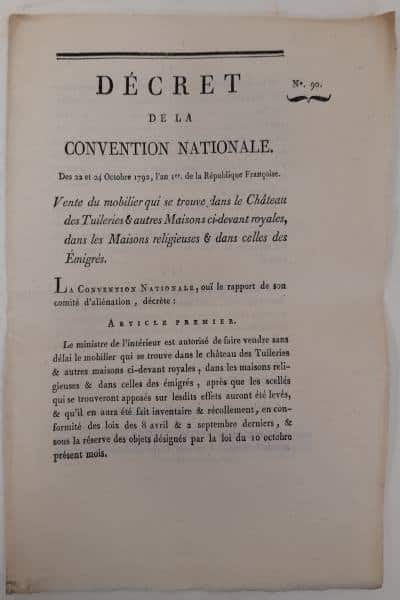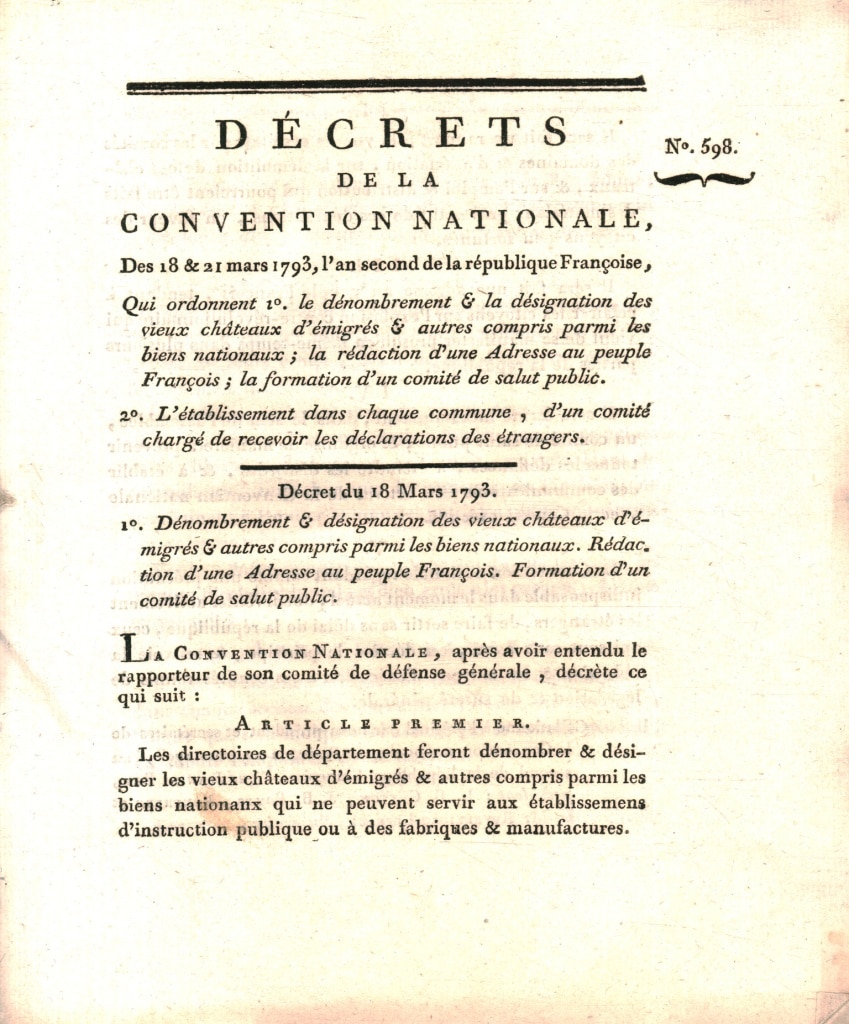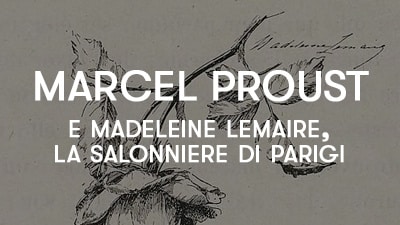
The Treasure in the Castle
Among a batch of books from the historic French castle of Ermenonville, a marbled cardboard binder, with a parchment spine and the title EMIGRES in gold on a leather patch; inside, a collection of sheets bearing the inscription Decret de la Convention Nationale with dates ranging from October 1792 to March 1794. A truly fascinating discovery: small pieces of history have made their way to my desk. I go through them one by one. Someone (a member of the castle-owning family? A scholar of Revolutionary history?) has put together a collection of legislative decrees related to the theme of the Emigrés.

The Migratory Waves During the French Revolution
It is well known that during the French Revolution, about 150,000 people left France: a first wave, following the events of 1789, was mainly composed of nobles, with a more distinctly counter-revolutionary tone. The second wave, starting with the fall of the Monarchy in 1792 and peaking during the Reign of Terror, involved all social classes in response to the intensifying climate of suspicion and policing that engulfed France, besieged by war. Our Decrees are situated within this second context.

Between Deportation, Death Penalty, and Confiscation of Property
It is interesting to follow the process of escalation of judicial measures against the émigrés; on October 23, 1792, a perpetual ban was proclaimed for anyone who had left French territory; on November 26, deportation outside the borders was ordered for those attempting to return and for prisoners in the border cities: anyone who tries to stay on French soil will be punished with death. Rewards were established for those who denounced hidden émigrés, and the police were authorized to conduct searches of suspicious homes. A large portion of the Decrees dealt with the property left behind in France by those who fled: confiscation became a significant opportunity for the young Republic’s economy, engaged in wars on the borders and against internal rebels. All movable and immovable property of those absent from their homes without justification was put up for sale; if wives, mothers, or daughters remained, they were only entitled to personal belongings, such as furniture, clothes, and household items.
Castles for Sale for Big Profits
And not only the castles of the émigrés were seized: the Decree of October 22, 1792 explicitly mentions the sale of the furniture of the Château des Tuileries, all royal residences, and the houses of religious orders: a colossal business for the state treasury. The lands left uncultivated were rented out or seeded by local municipalities, and the wood from the forests was sold for the benefit of the state. On September 13, 1793, measures were established to allow poor heads of households and widows with a “certificat de civisme en bonne forme” to purchase plots of confiscated land with state funds. This is not the only example of the application of the concept of égalité: the Decree of 26 Brumaire, Year II of the Revolution, established that prisoners in all of the Republic’s prisons would receive the same frugal rations: wealthy prisoners would pay for the poor.
The Committee of Public Safety and the Reign of Terror

One Decree in particular draws our attention as it marks a crucial turning point in the history of the Revolution: promulgated on March 18, 1793, its title is: “Census and list of the former castles of émigrés or others included among the national properties. Drafting an Appeal to the French people. Formation of a Committee of Public Safety”. This proposal to the Convention came from the Comité de défense générale, one of the numerous Committees created to address the chaotic internal and external political situation of the young Republic with a great confusion of competencies: “A Committee of Public Safety will be permanently established within the Assembly, organized to prevent all challenges, resolve disputes, and establish more active communications between the Convention and the Executive Committee.” For the first time, the Committee of Public Safety is mentioned here, and under Danton and Robespierre, it would become the main tool of the Reign of Terror.
Three small booklets then take us to the symbolic place of the Revolution, the Bastille. But I will tell you more about this another time.
We preview that these and other treasures from the library of the fascinating Ermenonville castle will be available for purchase in our online bookstore with a 10% discount starting May 22. For all updates, visit the dedicated page for this collection here.








